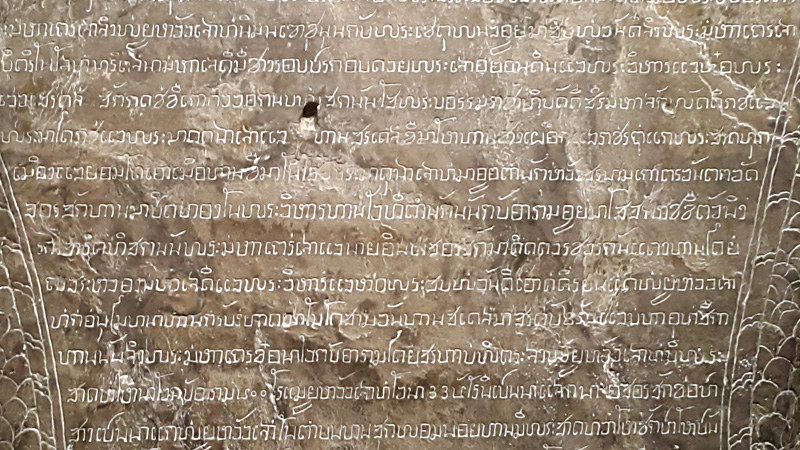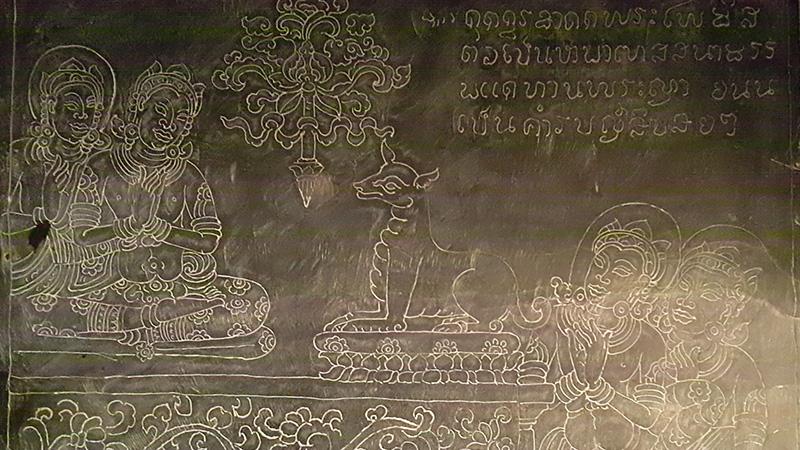Literature
Due to the long past, the Sukhothai literature might be confusing. Especially, there was the issue that most of the Sukhothai literature was lost. It was believed that the literature referred to the city of Sukhothai, such as Thao Si Chulalak and Phra Ruang Proverbs were the Sukhothai literary works with the rhetoric which was not older than that in the Rattanakosin period, even Traiphum Phra Ruang written by the King Thammaracha Lithai, its oldest version was found written in the Ayutthaya period, not the Sukhothai period.
The most important Sukhothai literature remains in the form of an inscription considered a primary document which is a very important document to study in terms of history, linguistics, literature, and etymology. It also represents cultural progress.
When the Sukhothai Kingdom invented "Lai Sue Thai", the Sukhothai people used this alphabet along with the Khmer alphabet and the Lanna alphabet, including other alphabet developed from Lai Sue Thai to write down on various materials such as stone, wood, metal, etc.

หลักศิราจารึก 
ลายสือไท
The first inscription of Sukhothai was discovered by Phra Wachirayan Bhikkhu (later called King Rama IV). In 1833 BE, it was registered as the first inscription called the 1st stone inscription or the stone inscription of King Ramkhamhaeng. After that, there are more and more people discovering the inscriptions, such as inscriptions made in Sukhothai period, inscriptions with Lai Sue Thai, inscriptions with Sukhothai alphabet, and inscriptions with the alphabet that have evolved or are influenced by Thai or Sukhothai Khmer, called Sukhothai inscriptions. Currently, there are about 72 inscriptions.
The contents of Sukhothai inscriptions are classified into the following categories: inscriptions praising the kings, monasteries and their religious activities, inscriptions showing religious activities, inscriptions of loyalty oath, inscriptions of laws, inscriptions of miscellany such as sermons, fables, narrations, spells, etc. Each inscription was a historical literary work that reflects the attitude of people in those days, such as faith in Buddhism, respect for God and ancestral spirits, relationships with other regions, human rights, etc.
Literary strategies were found in both prose and verse with dialects, such as "My brother passed away from me since I was young", and foreign dialects, such as Khmer, Pali, and so on.
Understanding Sukhothai cannot avoid understanding the literature which refers to these inscriptions to comprehend and realize the importance of the inheritance transferred to the present.















